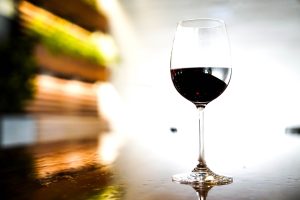Hosting a Wine Tasting Party: A Step-by-Step Guide
When it comes to selecting wines for a tasting event, there are a few key factors to consider. First and foremost, it’s important to choose a variety of wines that will appeal to a wide range of tastes. This means including both red and white wines, as well as a mix of dry, sweet, and sparkling options. It’s also a good idea to select wines from different regions and grape varieties to provide a diverse tasting experience.
In addition to variety, it’s important to consider the quality of the wines being offered. While it’s not necessary to break the bank, choosing wines that are well-regarded and of good quality will enhance the overall experience for your guests. Consider seeking out wines that have received high ratings from reputable sources or that have won awards at wine competitions.
Finally, it’s important to consider the theme or focus of the tasting event when selecting wines. For example, if you’re hosting a tasting event with a specific theme, such as “Wines of Italy” or “New World vs. Old World Wines,” you’ll want to choose wines that fit within that theme. Similarly, if you’re hosting a more casual tasting event, you may want to select wines that are easy-drinking and approachable for all guests.
In conclusion, when selecting wines for a tasting event, it’s important to consider variety, quality, and theme. By taking these factors into account, you can ensure that your guests will have a memorable and enjoyable tasting experience.
Key Takeaways
- Select wines that offer a variety of flavors and styles to cater to different preferences
- Choose a venue with good lighting, comfortable seating, and a relaxed atmosphere to enhance the tasting experience
- Create a tasting menu that complements the wines and includes a mix of savory and sweet items
- Set up the tasting station with proper glassware, water, and palate cleansers to enhance the tasting experience
- Guide the tasting experience by providing information about each wine and encouraging guests to share their thoughts and preferences
- Pair wines with food that enhance their flavors and create a balanced tasting experience
- Provide entertainment and activities such as live music or wine-related games to enhance the overall experience
Choosing the Venue
The venue for a wine tasting event can have a significant impact on the overall experience for your guests. When choosing a venue, it’s important to consider factors such as the size of the space, the ambiance, and the amenities available. If you’re hosting a small, intimate tasting event, you may want to consider a cozy wine bar or restaurant with a private room. On the other hand, if you’re hosting a larger event, you’ll need to find a venue with enough space to accommodate all of your guests comfortably.
In addition to size, it’s important to consider the ambiance of the venue. The atmosphere should be conducive to tasting and enjoying wine, with comfortable seating and good lighting. It’s also important to consider the amenities available at the venue, such as a sound system for background music or a kitchen for preparing food.
Finally, it’s important to consider the location of the venue and its accessibility for your guests. Choose a venue that is convenient for your guests to reach and that has ample parking or access to public transportation.
In conclusion, when choosing a venue for a wine tasting event, it’s important to consider factors such as size, ambiance, amenities, and location. By selecting the right venue, you can set the stage for a successful and enjoyable tasting experience for your guests.
Creating a Tasting Menu
A well-curated tasting menu can elevate the wine tasting experience and provide guests with an opportunity to explore different flavor profiles and food pairings. When creating a tasting menu, it’s important to consider factors such as the number of courses, the types of dishes being served, and the overall flow of the meal.
First and foremost, it’s important to determine the number of courses for the tasting menu. A typical wine tasting menu may include anywhere from three to six courses, with each course paired with a different wine. It’s important to strike a balance between offering enough variety without overwhelming guests with too many courses.
In addition to the number of courses, it’s important to consider the types of dishes being served. When creating a tasting menu, it’s important to offer a mix of flavors and textures to complement the wines being served. Consider including a mix of light and heavy dishes, as well as options for guests with dietary restrictions or preferences.
Finally, it’s important to consider the overall flow of the meal when creating a tasting menu. Start with lighter dishes and progress to heavier options as the meal goes on. It’s also important to consider how the flavors of each dish will complement the wines being served and to ensure that each course enhances the overall tasting experience.
In conclusion, creating a tasting menu involves careful consideration of factors such as the number of courses, types of dishes, and overall flow of the meal. By curating a well-thought-out tasting menu, you can enhance the overall wine tasting experience for your guests.
Setting Up the Tasting Station
| Item | Quantity | Cost |
|---|---|---|
| Glasses | 20 | 0.00 |
| Wine Bottles | 5 | 50.00 |
| Water Pitchers | 2 | 10.00 |
| Wine Buckets | 3 | 15.00 |
Setting up a well-organized and visually appealing tasting station is essential for creating an inviting and enjoyable atmosphere for your guests. When setting up a tasting station, it’s important to consider factors such as layout, glassware, and presentation.
First and foremost, it’s important to consider the layout of the tasting station. Arrange tables or stations in a way that allows guests to move easily from one wine to another without feeling crowded or overwhelmed. Consider providing ample space for guests to gather and socialize while they sample different wines.
In addition to layout, it’s important to consider the glassware being used at the tasting station. Use high-quality wine glasses that are appropriate for the types of wines being served. Consider providing separate glasses for red and white wines, as well as sparkling options if applicable.
Finally, it’s important to consider the presentation of the wines at the tasting station. Clearly label each wine with its name, region, and any other relevant information. Consider providing tasting notes or information about each wine for guests who are interested in learning more about what they’re sampling.
In conclusion, setting up a tasting station involves careful consideration of factors such as layout, glassware, and presentation. By creating an organized and visually appealing tasting station, you can enhance the overall experience for your guests.
Guiding the Tasting Experience
Guiding your guests through the wine tasting experience is an important part of ensuring that everyone has an enjoyable and educational experience. When guiding a wine tasting experience, it’s important to consider factors such as pacing, information sharing, and engagement with your guests.
First and foremost, it’s important to consider pacing when guiding a wine tasting experience. Allow guests enough time to sample each wine at their own pace without feeling rushed. Consider providing guidance on how much wine to pour for each sample and how long guests should spend on each wine before moving on to the next.
In addition to pacing, it’s important to share information about each wine being sampled. Provide guests with background information about each wine, including details about its region, grape variety, and flavor profile. Consider sharing interesting facts or stories about each wine to engage your guests and enhance their understanding of what they’re sampling.
Finally, it’s important to engage with your guests throughout the tasting experience. Encourage them to ask questions and share their thoughts about each wine. Consider leading discussions about flavor profiles or food pairings to encourage interaction among your guests.
In conclusion, guiding a wine tasting experience involves careful consideration of factors such as pacing, information sharing, and engagement with your guests. By providing thoughtful guidance throughout the tasting experience, you can ensure that everyone has an enjoyable and educational experience.
Pairing Wines with Food

Pairing wines with food is an art form that can greatly enhance the overall dining experience for your guests. When pairing wines with food for a tasting event, it’s important to consider factors such as flavor profiles, textures, and regional pairings.
First and foremost, it’s important to consider flavor profiles when pairing wines with food. Choose wines that complement the flavors of the dishes being served without overpowering them. For example, light-bodied white wines may pair well with seafood or light salads, while full-bodied red wines may complement heartier dishes such as steak or pasta.
In addition to flavor profiles, it’s important to consider textures when pairing wines with food. Choose wines that have a similar weight or texture to the dishes being served. For example, creamy dishes may pair well with rich and buttery Chardonnays, while crisp and acidic wines may complement dishes with bright and tangy flavors.
Finally, it’s important to consider regional pairings when pairing wines with food. Choose wines from the same region as the dishes being served to create harmonious flavor combinations. For example, pair Italian Chianti with classic pasta dishes or French Bordeaux with traditional French cuisine for an authentic dining experience.
In conclusion, pairing wines with food involves careful consideration of factors such as flavor profiles, textures, and regional pairings. By curating thoughtful wine and food pairings for your tasting event, you can enhance the overall dining experience for your guests.
Providing Entertainment and Activities
In addition to wine tasting, providing entertainment and activities can add an extra layer of enjoyment and engagement for your guests. When planning entertainment and activities for a wine tasting event, it’s important to consider factors such as theme-related activities, live music or performances, and interactive experiences.
First and foremost, it’s important to consider theme-related activities that tie into the overall concept of your wine tasting event. For example, if you’re hosting a “Wines of Italy” themed event, consider incorporating Italian-themed activities such as pasta-making demonstrations or Italian language lessons. These activities can provide an immersive experience for your guests and enhance their understanding and appreciation of Italian wines.
In addition to theme-related activities, live music or performances can add an extra layer of enjoyment for your guests. Consider hiring musicians or performers who can create a relaxed and enjoyable atmosphere for your event. Live music can provide a pleasant backdrop for wine tasting and encourage socializing among your guests.
Finally, interactive experiences such as blind tastings or educational workshops can provide an engaging and educational element to your wine tasting event. Consider hosting guided tastings or workshops led by knowledgeable sommeliers or winemakers who can provide insights into different aspects of wine production or appreciation.
In conclusion, providing entertainment and activities can add an extra layer of enjoyment and engagement for your guests at a wine tasting event. By carefully planning theme-related activities, live music or performances, and interactive experiences, you can create a memorable and enjoyable experience for everyone in attendance.
If you’re looking to host a wine tasting party, you may want to consider visiting Los Cabos Winery for some inspiration. They offer a variety of wines and have a helpful guide on their website for hosting your own wine tasting event. Check out their article on how to host a wine tasting party for some great tips and ideas.
FAQs
What is a wine tasting party?
A wine tasting party is a social gathering where guests sample and compare different types of wines. It is an opportunity to learn about and appreciate various wines in a fun and relaxed setting.
How do you host a wine tasting party?
To host a wine tasting party, you will need to select a variety of wines to taste, provide appropriate glassware, offer palate cleansers such as water and plain crackers, and consider providing some light snacks to accompany the wine.
What types of wines should be included in a wine tasting party?
It is recommended to include a variety of wines such as red, white, and rosé, as well as different styles and regions. This allows guests to experience a range of flavors and characteristics.
What are some tips for hosting a successful wine tasting party?
Some tips for hosting a successful wine tasting party include providing tasting notes or information about each wine, encouraging guests to share their thoughts and opinions, and creating a relaxed and enjoyable atmosphere.
How many wines should be included in a wine tasting party?
A typical wine tasting party may include 4-6 different wines to taste. This allows guests to sample a variety of wines without becoming overwhelmed.
What are some common themes for a wine tasting party?
Common themes for a wine tasting party may include focusing on a specific grape variety, region, or style of wine. Other themes could include blind tastings or comparing wines of different price points.



